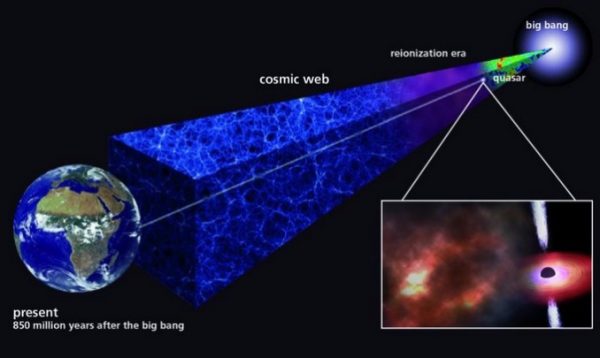The first stars may have formed even earlier than first thought – Astronomy Now Online

Analysis of a 13-billion-year-old cloud of gas illuminated from behind by an ancient quasar shows a surprising abundance of elements heavier than hydrogen and helium, elements that were cooked up in massive first-generation stars that were born, lived out their short lives and died in supernova blasts even earlier than previously thought.
Using the Magellan telescopes at the Las Campanas Observatory in Chile, researchers studying the cloud’s chemical makeup found it was not as primitive as would be expected if it was made up of the same raw materials that were present when the first stars began shining in the wake of the Big Bang.
Even though it formed just 850 million years after the birth of the universe, the cloud’s makeup is similar to that of clouds that formed several billion years later.
“Apparently, the first generation of stars had already expired by the time the cloud formed,” said Carnegie’s Michael Rauch, co-author of a paper published in The Astrophysical Journal. “This shows that the universe was rapidly swamped by the chemical products of later generations of stars, even before most of the present-day galaxies were in place.”
The first generation stars presumably were much more massive than the Sun and lived much shorter lives before dying in supernova explosions that seeded the surrounding space with heavy elements that, in turn, became part of the raw material available for successive generations.
The gas cloud in question dates back to 850 million years after the Big Bang birth of the cosmos. Astronomers were able to study its composition by spectroscopically examining the light of an even-more-distant quasar as it passed through the cloud on its way to Earth.
“Looking back in time far enough, one may expect cosmic gas clouds to show the tell-tale signature of the peculiar element ratios made by the first stars,” said Rauch. “Peering even further back, we may ultimately witness the disappearance of most elements and the emergence of pristine gas.”
The researchers are optimistic the discovery of even-more-ancient clouds will shed more light, so to speak, on the first generation of stars to “turn on” in the early universe.






